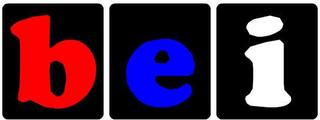 Learn about the TOEFL® test
What is the TOEFL test and how is it structured?
Learn about the TOEFL® test
What is the TOEFL test and how is it structured?
The Test of English as a Foreign Language (TOEFL) is a multiple-choice test for non-native English speakers. It is a computer-based test with four sections, two of which are computer-adaptive.
- Listening — 40-60 minutes, 30-49 questions; computer-adaptive
- Structure — 15-20 minutes, 20-25 questions; computer-adaptive
- Reading Comprehension — 70-90 minutes, 44-55 questions
- Writing — 30 minutes, one essay
What is a Computer-Based Test?
Essentially, it is an electronic version of a paper exam. You can answer questions in any order you wish and you can jump back and forth within the section. You will see this in the Reading and Writing sections of the exam.
What is a Computer-Adaptive Test?
It means that the difficulty of the test adjusts to the test taker. The computer uses your performance on the questions you have been given to determine what question you will be given next. When you answer a question correctly, the next question is more difficult. When you answer a question incorrectly, the next question is easier. You will see this happen in the Listening and Structure Sections of the exam.
How is the TOEFL test scored?
Your TOEFL score consists of several numbers, each of which covers a part of your performance on the TOEFL test. The most familiar number is the overall, or composite, score. This number ranges from 0 to 300 and is determined from a combination of your scores on the four sections.
The individual sections are also graded separately. You will receive three scores ranging from 0 to 30: Listening, Reading, and Structure/Writing.
How important are my TOEFL scores?
TOEFL scores vary in importance at different schools. Other factors that schools consider include academics, work experience, letters of reference, and scores on other standardized tests (GMAT, SAT, etc).
Can I cancel my scores?
Yes. You can cancel your scores immediately after you take the TOEFL test. This is the only time you can cancel your scores. Fortunately, you can make the decision to cancel at the testing center after you see your scores. The fact that you cancelled your scores will be noted on your official TOEFL score report.
How Can I Learn About the Latest TOEFL tests?
The Princeton Review carefully monitors TOEFL tests throughout the year so that we can provide our students with the most up-to-date guidance and information on the test. You can read our latest report
here.
What fees are associated with the TOEFL test?
The fee to take the TOEFL test is $110 worldwide.
______________________
internationaltoefl@teacher.com




 Based upon the principles stated in the UNESCO Universal Declaration on Cultural Diversity, adopted by the General Conference of UNESCO at its 31st session (2 November 2001), the Organization has committed itself to supporting Member States wishing to encourage linguistic diversity while respecting the mother tongue at all levels of education, wherever possible, to promote through education an awareness of the positive value of cultural diversity and to make full use of culturally appropriate methods of communication and transmission of knowledge.The quest for quality education today is inextricably bound up with the processes and impact of globalization.
Based upon the principles stated in the UNESCO Universal Declaration on Cultural Diversity, adopted by the General Conference of UNESCO at its 31st session (2 November 2001), the Organization has committed itself to supporting Member States wishing to encourage linguistic diversity while respecting the mother tongue at all levels of education, wherever possible, to promote through education an awareness of the positive value of cultural diversity and to make full use of culturally appropriate methods of communication and transmission of knowledge.The quest for quality education today is inextricably bound up with the processes and impact of globalization.
 bei for internationla education
bei for internationla education


